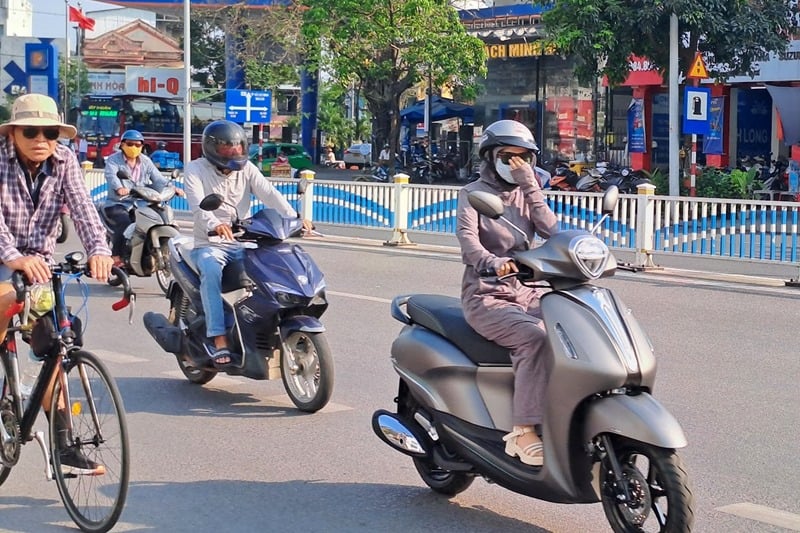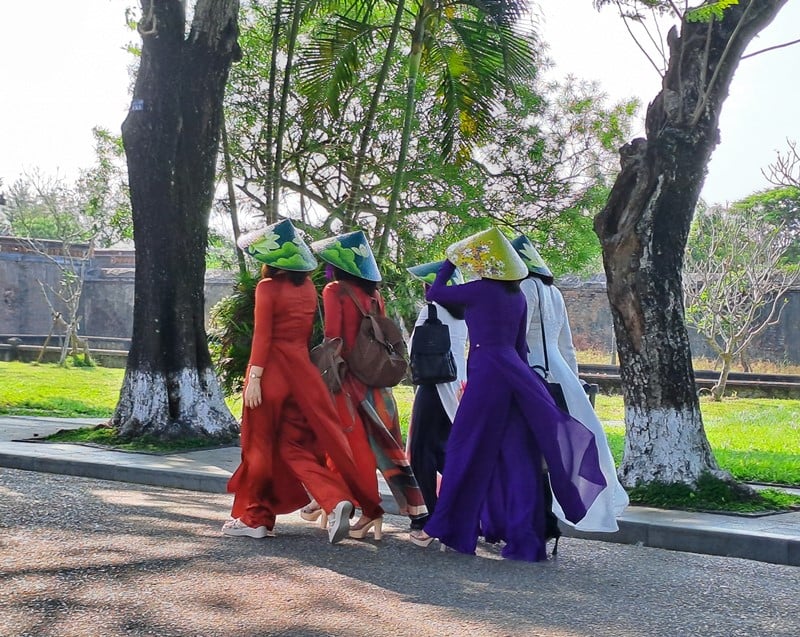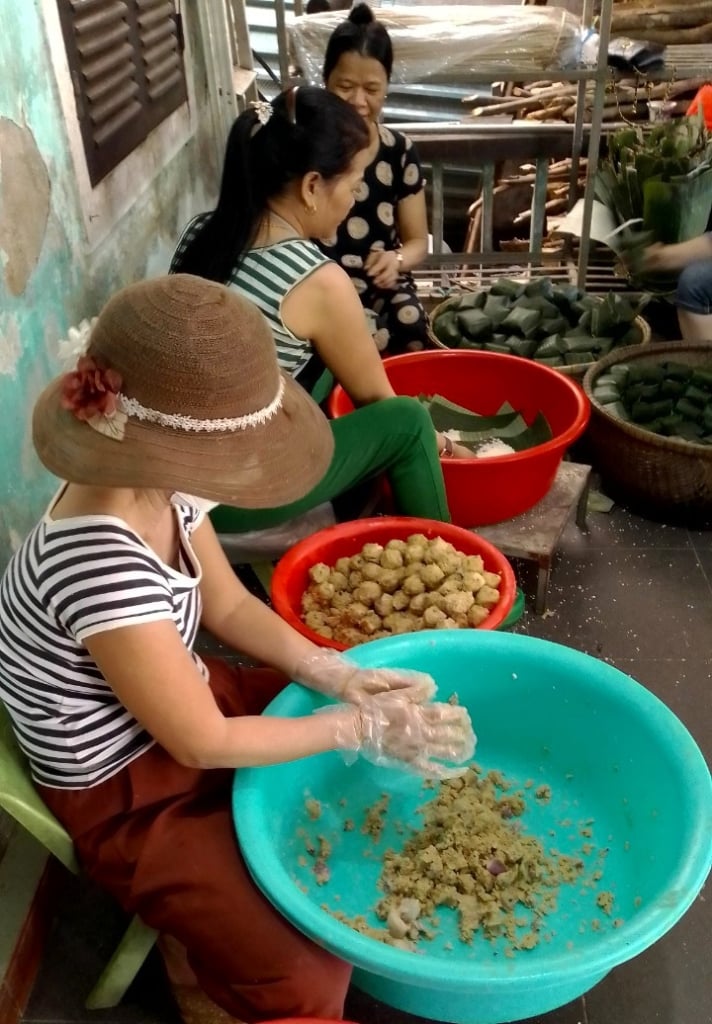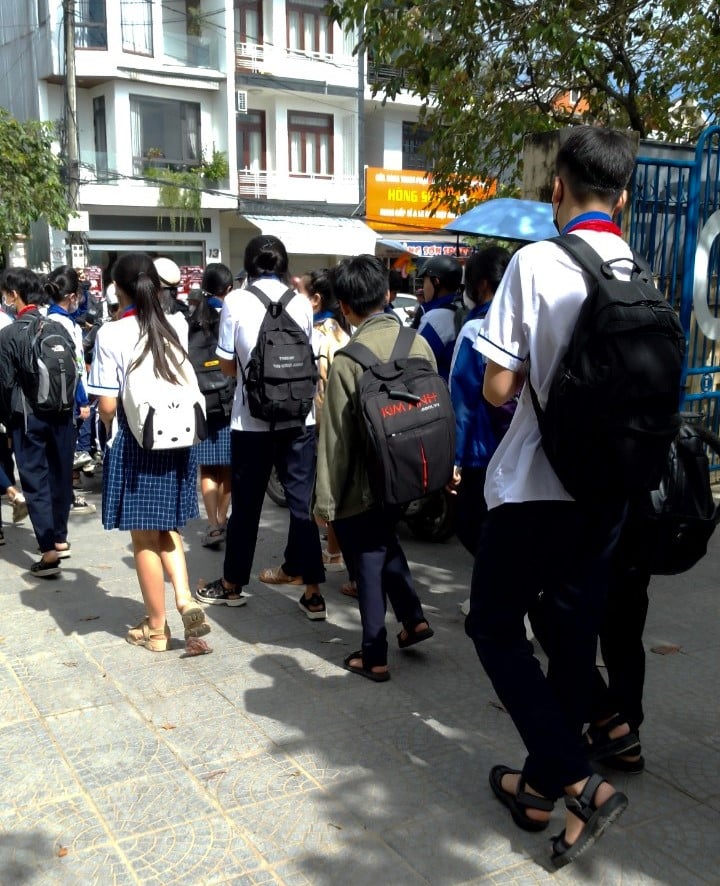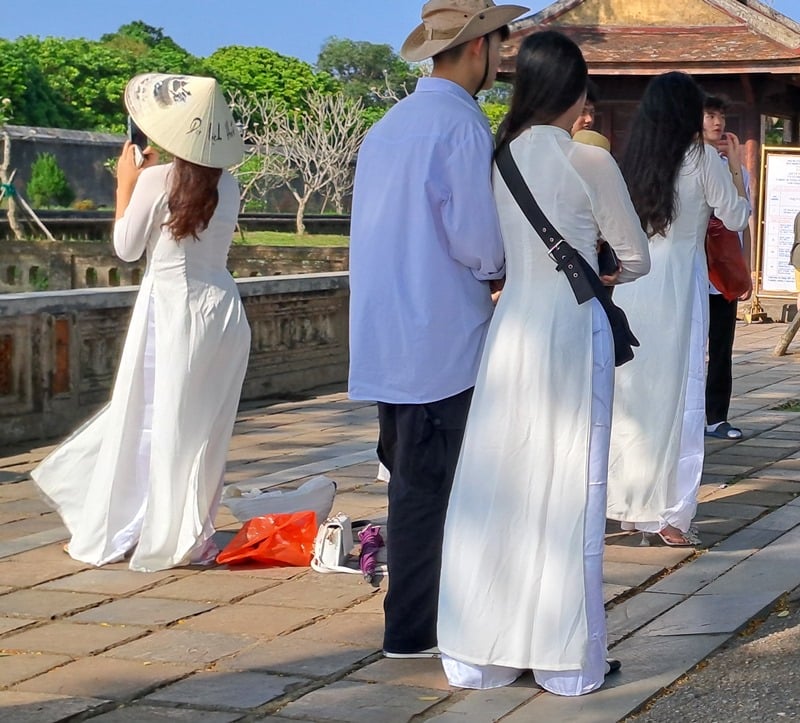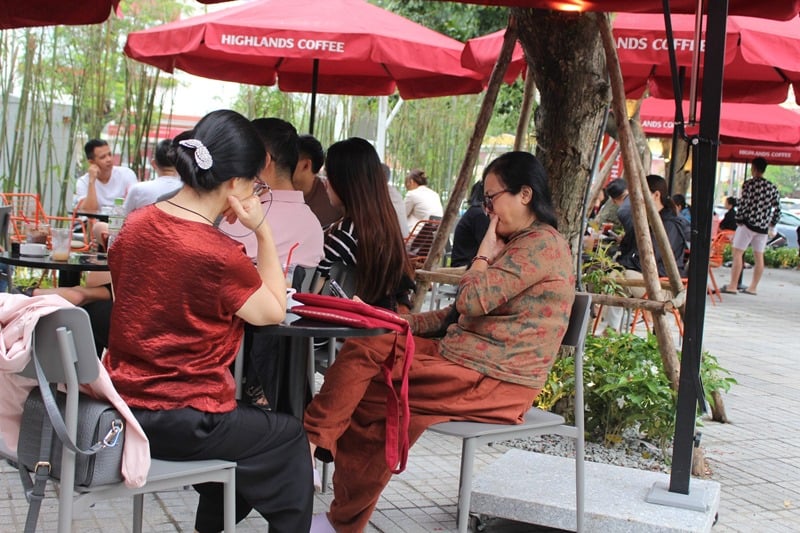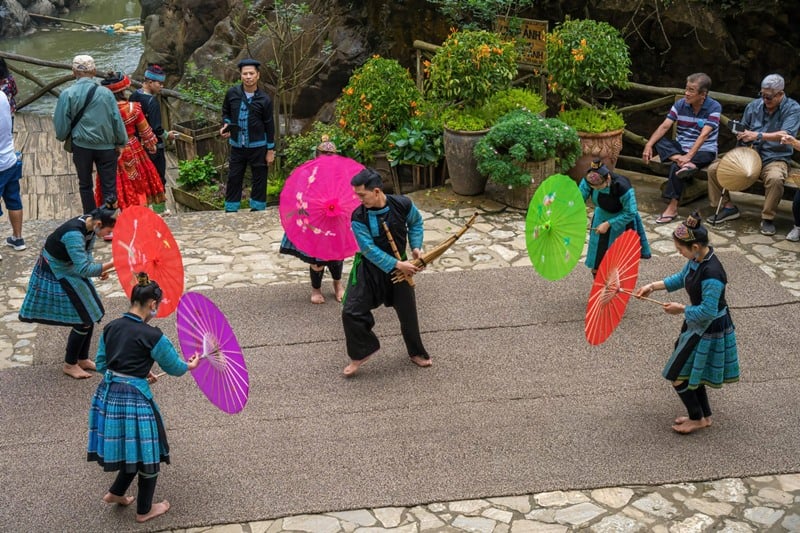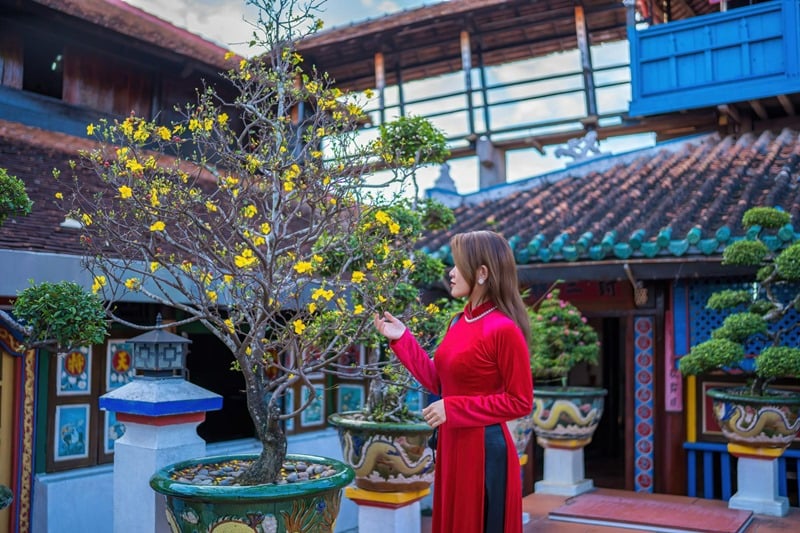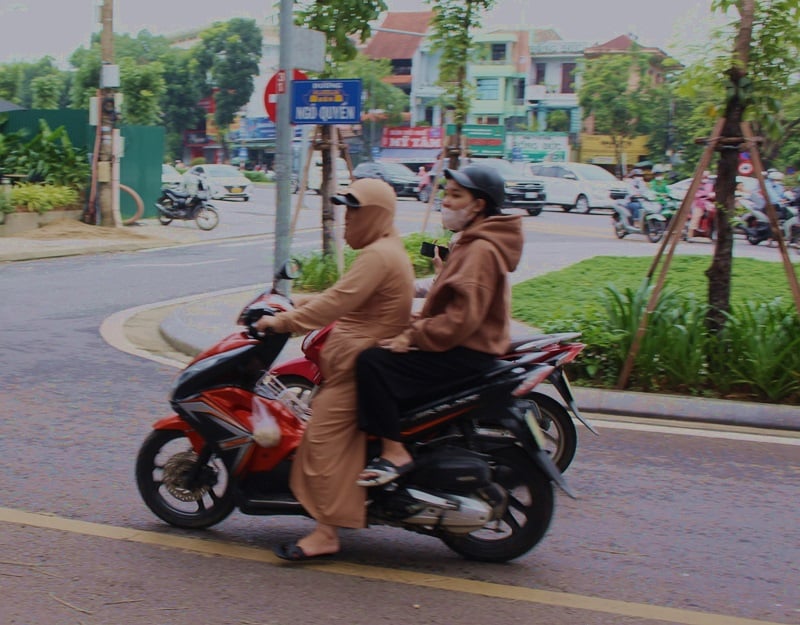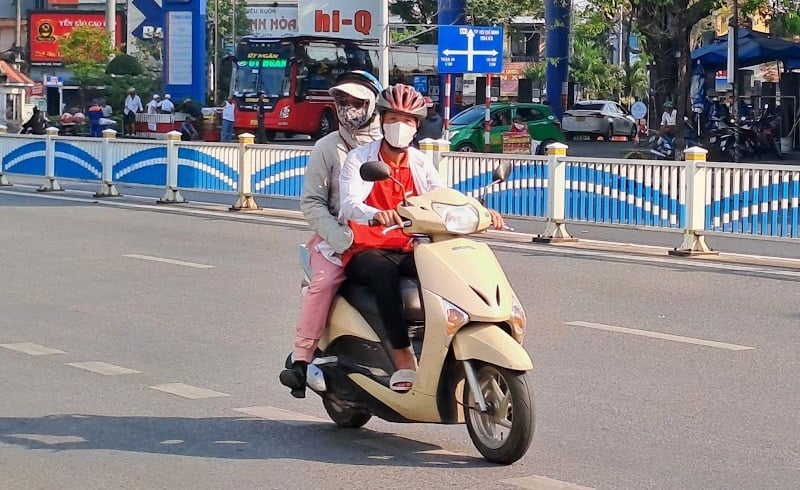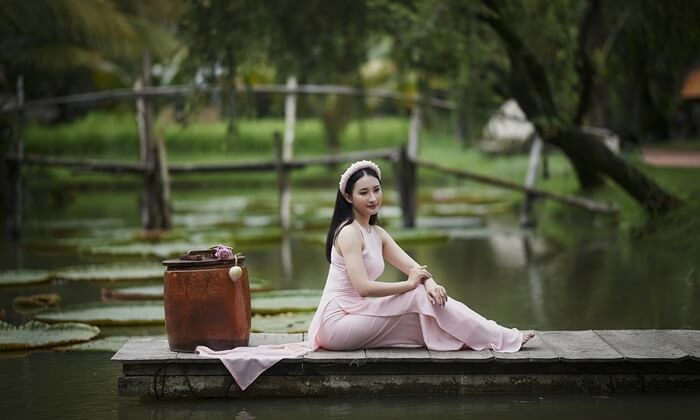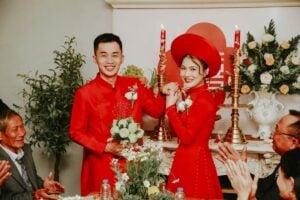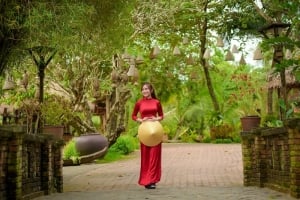Before traveling to Vietnam, you may wonder about the daily clothes in this country. Are there any special regulations or notes regarding the costumes of indigenous people that tourists need to pay attention to?
To help you overcome this wonder, Vietnamdive will introduce you to the daily costumes of the Vietnamese and provide a few necessary notes on how to dress when you travel here.
1. What do Vietnamese people often wear?
Currently, daily clothes in Vietnam are comfortable and mostly follow modern, Western fashion styles. The choice of clothing is mainly determined by the nature of the wearer’s daily work.
You can see them below:
1.1. Female teachers and office workers often choose Ao Dai for certain days of the week or month. On the remaining days, women will freely show off their figures with dresses and vests in modern European business attire.
1.2. Men working in offices prioritize choosing shirts and pants.
1.3. Freelance workers or traders have much simpler clothes. Besides some safety priorities, they often choose costumes with light, flexible fabrics suitable for their work. Ready-to-wear attires such as T-shirts, jeans, or khakis are popular. Middle-aged and older women like soft and elastic fabric outfits.
1.4. For pupils, costumes will be uniforms according to the school’s regulations. In particular, uniforms for primary and secondary school students mainly revolve around the criteria of being neat and polite. At the same time, they need to ensure comfort and convenience for students of young age so they can move freely. The outfit is usually a collared shirt made of elastic, cotton, and kate fabric, with shorts, pants, or skirts made from kaki fabric.
1.5. High school students’ attire requires more formality. Female students will wear a white ao dai on certain days of the week. On the remaining days, they can choose a polite uniform of a shirt with a skirt or pants and follow the school’s color and fabric regulations. Male students are required to wear long pants and collared shirts.
1.6. Streetwear is always the free outfit group; almost no regulations or rules exist for this clothing style. Vietnamese people can wear anything they want to go out, including tank tops, nightgowns, backless tops, short and long skirts, etc.
However, overly sexy outfits are less popular on the streets of Vietnam. This feature partly results from the cultural and religious defaults that each person maintains.
1.7. In certain regions of Vietnam, such as Ethnic minority areas in the Central Highlands or the Northwestern mountainous region, people here will have typical costumes made from Brocade, having their cultural style. Ao Ba Ba costumes are well-known daily in the Southwest and the Mekong Delta.
However, these typical costume patterns of ethnic groups or each part are uncommon in Vietnamese life. They are only a cultural symbol of each specific region and ethnic community. Therefore, you only have the opportunity to see these typical costumes in a few localities and will not see them again in most cities of Vietnam.
Overall, the fashion style in Vietnam today is very airy and open-minded, bringing a lot of modern Western breath. Although most companies, offices, and schools have their own regulations on clothing for their employees and students, in general, they still emphasize aesthetics, dynamism, convenience, and modernity and respect the aesthetic outlook of each individual.
2. Costumes for special events
Like most countries around the world, Vietnamese people pay attention to choosing appropriate outfits during special events, ensuring politeness and formality for both the wearers and the events they participate in.
Specifically:
Specifically:
2.1. Distinctive and polite clothing is required at festive events related to traditional ritual elements, such as pagoda ceremonies, offerings, incense offerings, etc.
The shirt must not reveal the waist or chest, the sleeves and collar must be discreet, and the color must be neutral, not flashy or multi-colored.
Both women and men are required to wear pants that fall above the knee, not styled with cuts or slits that expose the body. Women are often encouraged to wear the traditional long dress – Ao Dai.
2.2. At parties, festivals, and weddings, Vietnamese people freely choose beautiful, elegant clothes that suit their body shape and ensure the necessary politeness. Most of these clothes follow modern Western designs, such as skirts and dresses for women and pants, shirts or vests for men.
2.3. In particular, for the wedding attire, the bride and the groom usually have 2 main sets during their wedding ceremony, including Ao Dai and Turban, which are used for holding the ceremony in front of the altar of ancestors and relatives. After the ceremony, the bride will choose another Western-style wedding dress, and the groom will choose a suit for his wedding party.
2.4. For New Year’s wishes and congratulatory parties, Vietnamese people are forbidden to wear dark colors, such as black, gray, purple, or just one tone of white for both shirts and pants. This is because these colors easily create associations with unfortunate events, such as funerals, breakups, and separations.
In short, the basic criteria for costumes at the most important events in Vietnam are politeness and formality. Next, aesthetic features also receive a lot of attention from the wearers. It’s all about ensuring enough respect for the events you attend, the people wearing them, and yourself.
3. Vietnamese costumes causing misunderstandings among tourists
You will wonder when seeing a few unique clothes in Vietnam appear on the streets.
3.1. Sun protection shirt:
One of the outfits in Vietnam that easily confuses tourists is the “Sun protection shirt” or ” Anti-sunlight shirt” worn by women. It looks like a Japanese Ninja outfit or a mandatory fashion for Muslim women.
In fact, it’s just an outfit for women to protect themselves from the sun when they leave the house. The sun protection shirt is made of good elastic fabric with two thick layers. It consists of a loose hooded shirt that covers the head, face, upper body, arms, and hands. The dress below looks like a wide fabric sheet with buttons or velcro hook tape to secure the back.
A sun protection suit can also include a connected shirt and skirt, covering the whole body from head to toe.
Vietnamese women only use anti-sunlight clothing when leaving the house as an outer layer, which can protect their skin from the sun to keep it white. Inside each protection shirt will be the prettier main outfits they wear.
These sun protection suits make women completely “invisible” every time they go out. Especially on sunny days, it will be difficult to recognize someone under a thick coat that covers the entire body and eyes hidden deep in colored glasses. It makes many visitors feel confused the first time they see it. It’s because the outfit is easy to remind one of mysterious people like witches or sheep in a monastery of some strange religion.
3.2. Close-fitting mask:
If masks are only reserved for doctors and people working in laboratories in many other countries, then in Vietnam, masks are indispensable for almost everyone who leaves the house.
They wear masks not to prevent bacteria or disease but to avoid dust and sun protection. Typically, women like their skin still white. The hot climate and the culture of riding motorbikes have made the mask an indispensable item of local life. No one seems uncomfortable with a mask permanently on their face.
As a first-time tourist to Vietnam, don’t worry when you see almost all the Vietnamese on the street wearing masks. No government regulations or religious traditions related to wearing masks on the street exist. The disease factor is also eliminated if you do not receive any recommendations or notices related to this issue from the government or your tour guide.
The mask on the face to protect the skin is typically for females, who want their skin white, which is considered a beautiful feature in the eyes of almost all Vietnamese people.
4. What do you wear when you come to Vietnam?
4.1. Vietnam’s climate is not too cold in the winter but very hot in the summer. Therefore, in addition to paying attention to the weather in Vietnam in order to prepare appropriate clothing, such as warm clothes for cold days or cool clothes for summer days, feel free to wear what you like.
4.2. If your schedule includes visiting historical sites, pagodas, temples, cultural relics, etc., you should wear discreet, polite clothing, such as shirts and skirts that do not expose the waist or shoulders, chest, and pants should be above the knee.
4.3. At the beaches, except for some small beaches reserved for local people, most beachgoers are very comfortable in swimsuits and bikinis. Therefore, don’t worry about whether you can wear a bikini when swimming in Vietnam.
4.4. Walking around the cities, you can comfortably wear the gentle clothes you like without worrying about anything. Vietnamese people dress freely, without being bound or following any rules, except bikinis, every time they walk on the street.
4.5. If you need to attend a party at a Vietnamese family, ask the party owner, who invited you to attend, about what you should and should not wear. There won’t be too many complicated regulations, but it will help you feel more comfortable and confident.
From the above knowledge about clothing in Vietnam, hopefully, you can confidently prepare your favorite clothes to start a trip to this beautiful country.
We want to offer you a good suggestion: experience a measured tailor service in Vietnam. Hoi An is considered a paradise for this service. You can choose to have shirts, vests, dresses, or skirts made in any style, according to your favorite measurements and designs, but at an affordable price.
Besides, ready-to-wear fashion products in the middle segments, such as T-shirts, khaki pants, jeans, scarves, and underwear, are also rich in design, quality, and low price.
Therefore, consider bringing enough clothes and taking the time to fill your suitcases when you come here. This activity can add a small good memory in Vietnam for your trip to this beautiful country.

